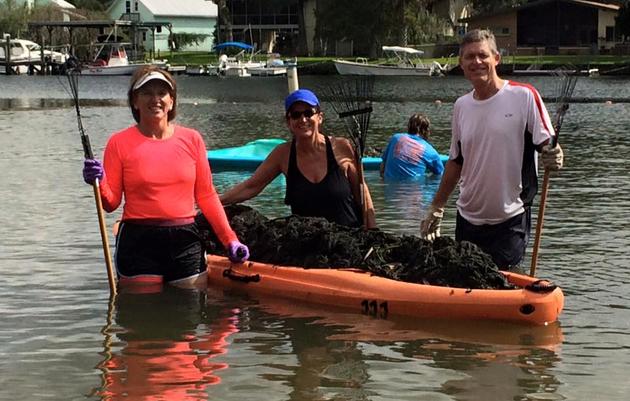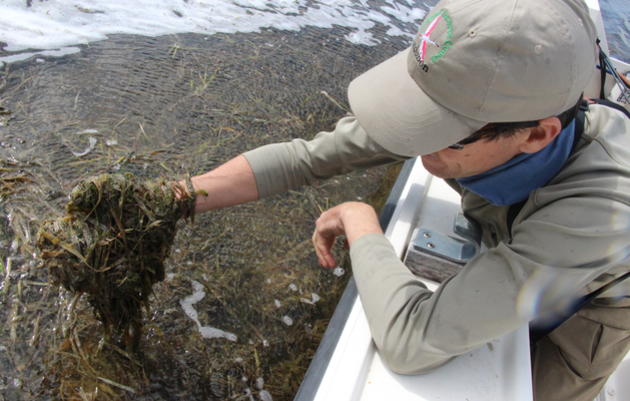Fish kills in the Indian River Lagoon, plumes of dark water in the Caloosahatchee and St. Lucie estuaries, and a massive seagrass die-off in Florida Bay are just the latest evidence.
Scientists believe this crisis is due to the mismanagement and over-drainage of freshwater off Florida’s mainland combined with increased water pollution from fertilizers, sewage, and septic tanks.
Water management problems start in Lake Okeechobee – the liquid heart of the Everglades. The Lake’s optimum water level is between 12.5 and 15.5 feet. Higher levels drown out native plant communities and damage foraging, breeding, and nesting habitats for iconic wildlife such as the endangered Everglade Snail Kite. When water levels are high enough to threaten the safety of the aging Herbert Hoover Dike, the U.S. Army Corps of Engineers discharges water out to the coasts in the Caloosahatchee and St. Lucie estuaries because of the limited options to move water south through the central and southern Everglades. Without the ability to move freshwater south in the historic pattern of the River of Grass, Florida Bay is cut off from a natural source of freshwater and is too salty. High salinity levels in Florida Bay have led to the sea grass die-offs in one of Florida’s most beautiful and productive estuaries.
For decades, Everglades advocates have recognized that storing water south of Lake Okeechobee in the Everglades Agricultural Area (EAA) is a crucial element of restoration. Historically, this area would be covered in water up to four feet deep during the wet season, connecting Lake Okeechobee to the Southern Everglades and Florida Bay. But now water in this region is carefully managed to keep farm fields dry in the wet season and to direct water to thirsty crops in the dry season. Additional water storage around the Lake is needed to catch water during wet periods and release it beneficially during drier periods.
Florida’s 2016 coastal water crisis renews the urgency to begin planning for the EAA Storage Reservoir, a crucial element of the Comprehensive Everglades Restoration Plan. This project, originally envisioned to store 360,000 acre/feet of water in the EAA, will provide a place to move water currently discharged to sensitive coastal estuaries. And in turn, the reservoir project will provide a source of water in the dry season for the wetlands and marshes of the Southern Everglades and Florida Bay.
But storage is not the only problem. Audubon Florida is advocating for water quality solutions that include a combination of prevention and treatment strategies. Solutions include converting household wastewater from septic tanks to central sewers, restricting the use of fertilizer, and discouraging use of reclaimed water for landscaping that adds nutrients to aquifers and nearby creeks. Better agricultural practices can reduce the nutrients leaving agricultural lands. Manmade marshes or other treatment projects can intercept and remove nutrients from water before it flows into coastal estuaries.







